Solid-state batteries (SSBs) are the next big leap in energy storage, replacing the liquid electrolyte in traditional lithium-ion batteries with a solid electrolyte. This key difference makes them safer, more efficient, and longer-lasting. Unlike conventional batteries, SSBs eliminate the risk of leaks, fires, and thermal runaway, making them far more stable.
Their biggest advantage?
Higher energy density. SSBs can store more power in a smaller package, allowing electric vehicles (EVs) to achieve significantly longer ranges without increasing battery size. Faster charging times further enhance their appeal, reducing the wait time for EV owners and making electric mobility more convenient.
Additionally, these batteries degrade slower, offering a longer lifespan and reducing the need for costly replacements. SSBs are a game-changer because they address the key pain points of current lithium-ion batteries: safety risks, limited range, and long charging times.
Major automakers and tech giants are racing to commercialize them, with promises of production-ready models within the decade. Once mass-produced, solid-state batteries could revolutionize not only EVs but also consumer electronics, renewable energy storage, and aerospace applications.
The future of energy storage is solid, and it’s closer than ever.
See also:
Current Battery Technology Limitations

Photo Credit: Mateusz Zatorsky/Unsplash.
Lithium-ion batteries power everything from smartphones to electric vehicles, but they come with major drawbacks.
- Safety: Safety is a top concern because their liquid electrolytes are highly flammable, increasing the risk of fires and thermal runaway.
- Limited Energy Density: Limited energy density means EVs require large, heavy battery packs to achieve decent range, impacting efficiency and design flexibility.
- Slow Charging Speeds: Slow charging speeds remain a bottleneck, with many EVs taking hours to fully recharge.
- Battery Degradation: Battery degradation is another issue. After several years of use, lithium-ion cells lose capacity, reducing performance and resale value.
- Supply Chain Constraints and Material Scarcity: Lastly, supply chain constraints and material scarcity, especially for lithium, cobalt, and nickel—drive up costs and pose sustainability challenges.
What Are Solid-State Batteries?
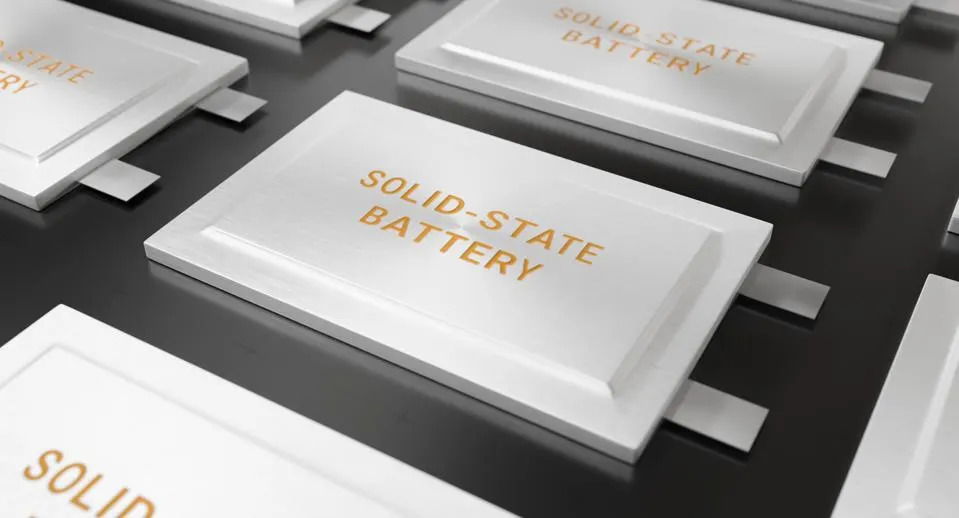
Photo Credit: Forbes.
Solid-state batteries (SSBs) are an advanced energy storage solution that replaces the liquid electrolyte found in lithium-ion batteries with a solid electrolyte. This fundamental shift improves safety, energy density, and longevity.
How They Differ from Lithium-Ion Batteries
- Solid Electrolyte: Eliminates fire risk, improves stability, and enables higher energy density.
- Anode: Often made of lithium metal instead of graphite, boosting capacity and reducing weight.
- Cathode: Similar to lithium-ion but optimized for solid-state compatibility.
By removing liquid components, SSBs offer faster charging, longer life cycles, and better overall efficiency, setting the stage for the next generation of energy storage.
Benefits of Solid-State Batteries
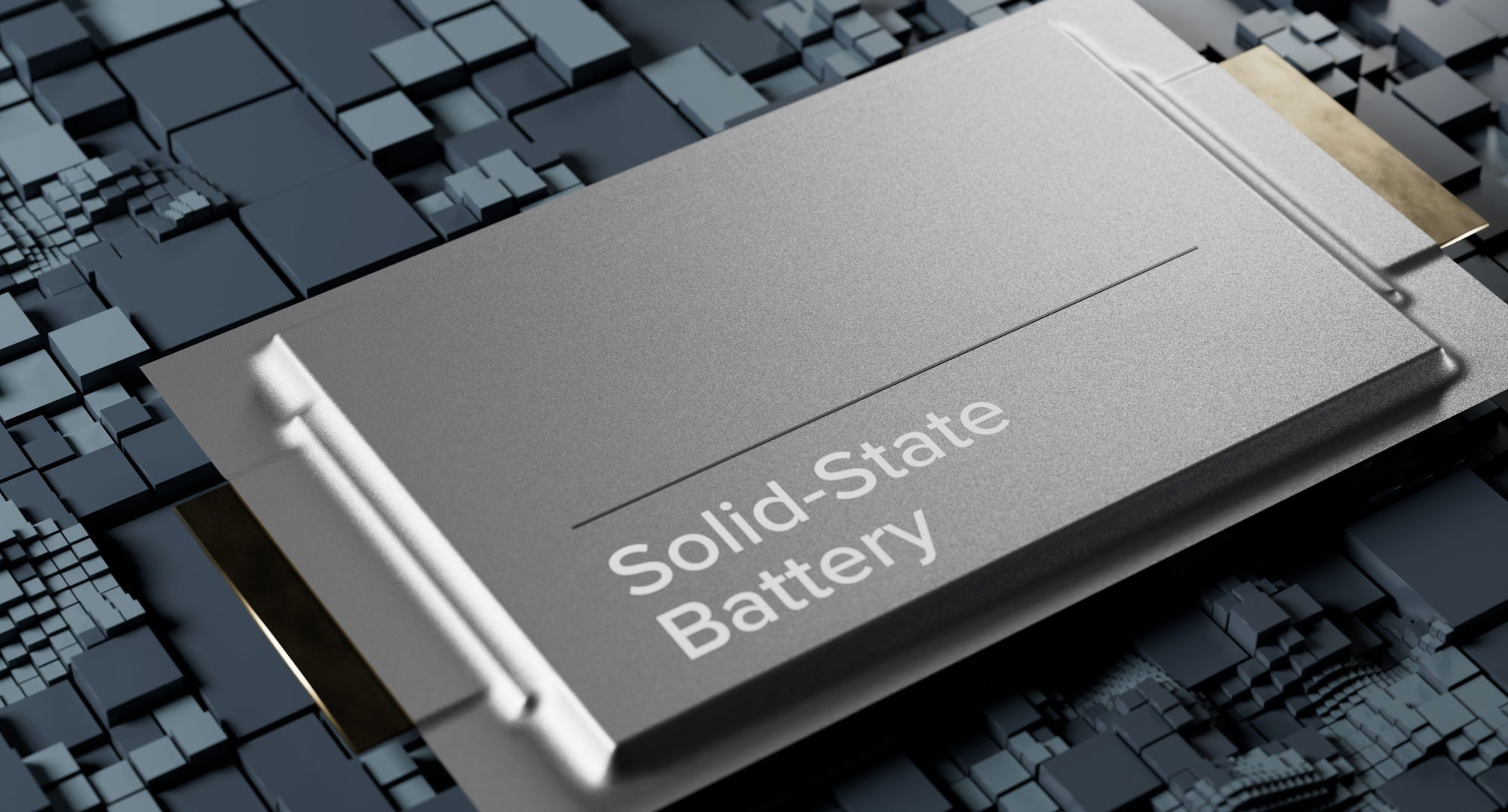
Photo Credit: Battery Power Tips.
Solid-state batteries (SSBs) offer game-changing advantages over traditional lithium-ion technology, making them the future of energy storage.
Higher Energy Density – Longer EV Range
SSBs store more energy in a smaller, lighter package. This means electric vehicles (EVs) can travel significantly farther on a single charge without increasing battery size. A higher energy-to-weight ratio also improves efficiency and performance.
Faster Charging Times – Reduced Downtime
With lower internal resistance, SSBs allow for ultra-fast charging. Instead of waiting hours, EV owners could recharge their cars in minutes. This breakthrough eliminates range anxiety and makes electric mobility far more convenient.
Enhanced Safety – Lower Risk of Overheating or Fire
Traditional lithium-ion batteries use flammable liquid electrolytes, which can overheat and catch fire. SSBs replace these with solid electrolytes, drastically reducing the risk of thermal runaway, short circuits, and battery fires. This makes EVs and other battery-powered devices much safer.
Longer Lifespan – More Charge Cycles Before Degradation
SSBs degrade much slower than lithium-ion batteries, maintaining their capacity over thousands of charge cycles. This means fewer battery replacements, lower costs over time, and a longer-lasting investment for EV buyers.
Challenges in Solid-State Battery Development
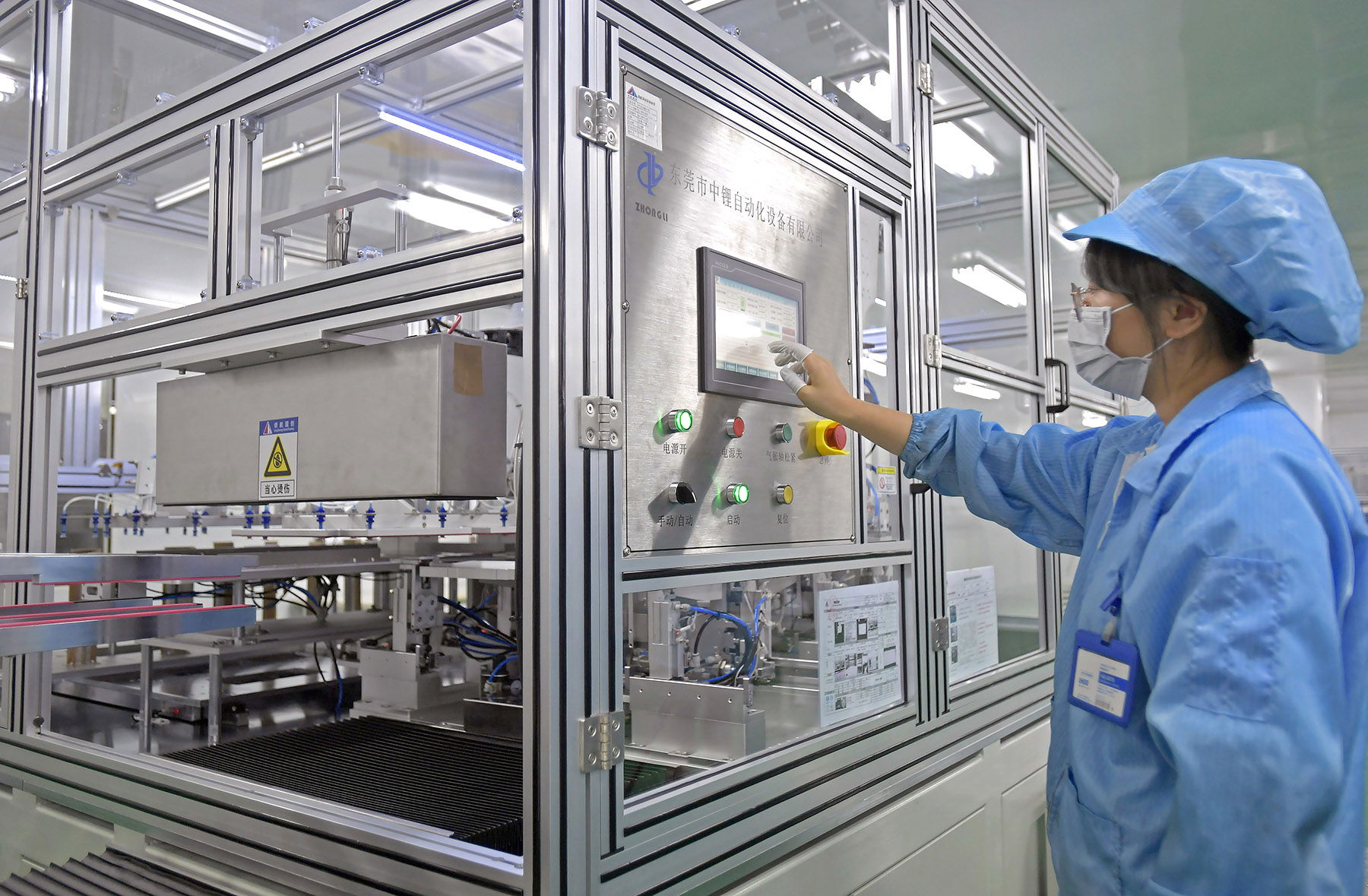
Photo Credit: China Daily.
Solid-state batteries (SSBs) promise a revolution in EV battery technology, but major hurdles stand in the way of mass adoption.
Manufacturing Complexity – Scaling Production
SSBs require an entirely different manufacturing process than lithium-ion batteries. Traditional lithium-ion production is well-established, but scaling SSBs demands new techniques, specialized equipment, and ultra-precise fabrication methods.
Current production yields are low, and defects in the solid electrolyte can lead to performance issues. Until manufacturers solve these challenges, large-scale production remains a bottleneck.
Material Limitations – Finding the Right Solid Electrolyte
The core of a solid-state battery is its electrolyte, and finding an ideal material is difficult. Solid electrolytes must allow fast ion movement while remaining stable, durable, and cost-effective.
Sulfide-based electrolytes offer high conductivity but are sensitive to moisture. Oxide-based electrolytes are more stable but harder to integrate. Researchers are still working to perfect the chemistry needed for high-performance SSBs.
High Costs – Current Barriers to Affordability
SSBs are significantly more expensive to produce than lithium-ion batteries. Advanced materials, complex manufacturing, and low production yields drive costs up.
Current estimates suggest SSBs could cost two to four times more than conventional EV batteries. Until production scales up and material costs drop, SSBs will remain too expensive for mass-market EVs.
Commercialization Timeline – When Can Consumers Expect Them?
Automakers and battery firms are racing to bring SSBs to market, but commercialization is still years away. Toyota, QuantumScape, and Solid Power project limited production by 2025-2026, with mass adoption expected closer to 2030.
The first vehicles with SSBs will likely be high-end models before the technology trickles down to affordable EVs. While solid-state batteries offer superior energy density, faster charging, and enhanced safety, overcoming manufacturing and cost challenges is critical.
As research advances, SSBs could finally deliver the breakthrough EVs need to dominate the future of transportation.
Solid-State Batteries vs. Lithium-Ion Batteries
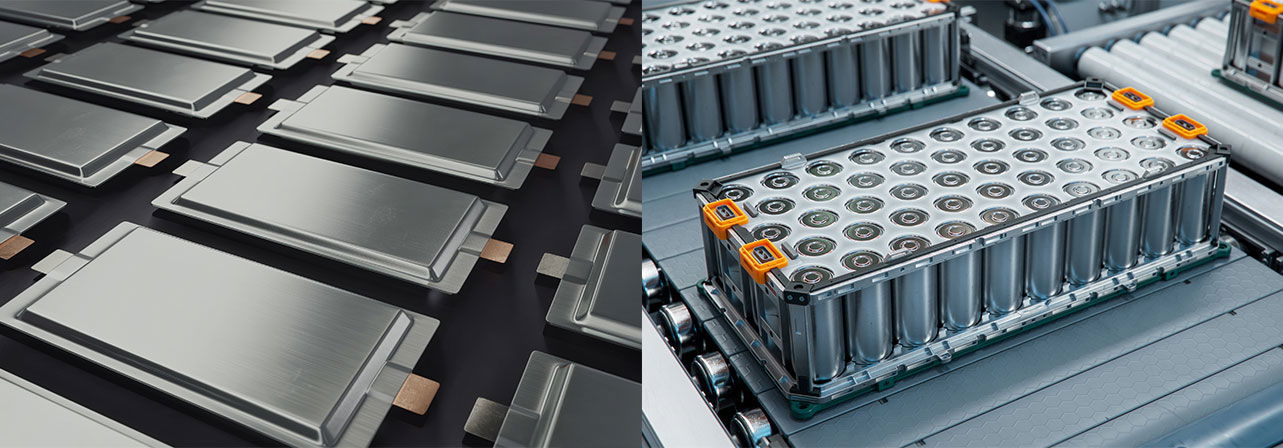
Photo Credit: Laserax.
Solid-state batteries (SSBs) are set to outperform lithium-ion batteries in nearly every category, but challenges remain.
Energy Storage Capacity Comparison
SSBs offer higher energy density, meaning they can store more power in the same space. This translates to longer EV range without increasing battery size. Some estimates suggest SSBs could boost energy capacity by 50% or more compared to today’s lithium-ion technology.
Charging Speed Differences
With lower internal resistance, SSBs can handle faster charging speeds. While lithium-ion batteries often take hours to fully recharge, SSBs could reduce this time to minutes. This would revolutionize EV convenience, eliminating range anxiety and long wait times.
Durability and Safety Factors
SSBs last longer than lithium-ion batteries, retaining capacity over thousands of charge cycles with minimal degradation. More importantly, they eliminate the risk of thermal runaway and fires caused by flammable liquid electrolytes.
With a solid electrolyte, SSBs are inherently safer, even under extreme conditions.
Cost Analysis and Future Price Trends
Right now, SSBs are far more expensive than lithium-ion batteries due to complex production and material costs. However, as manufacturing scales and technology improves, prices are expected to drop significantly by 2030, making SSBs the future of energy storage.
See also:
A Beginner's Guide to Hydrogen Engines and How They Work
Applications of Solid-State Batteries
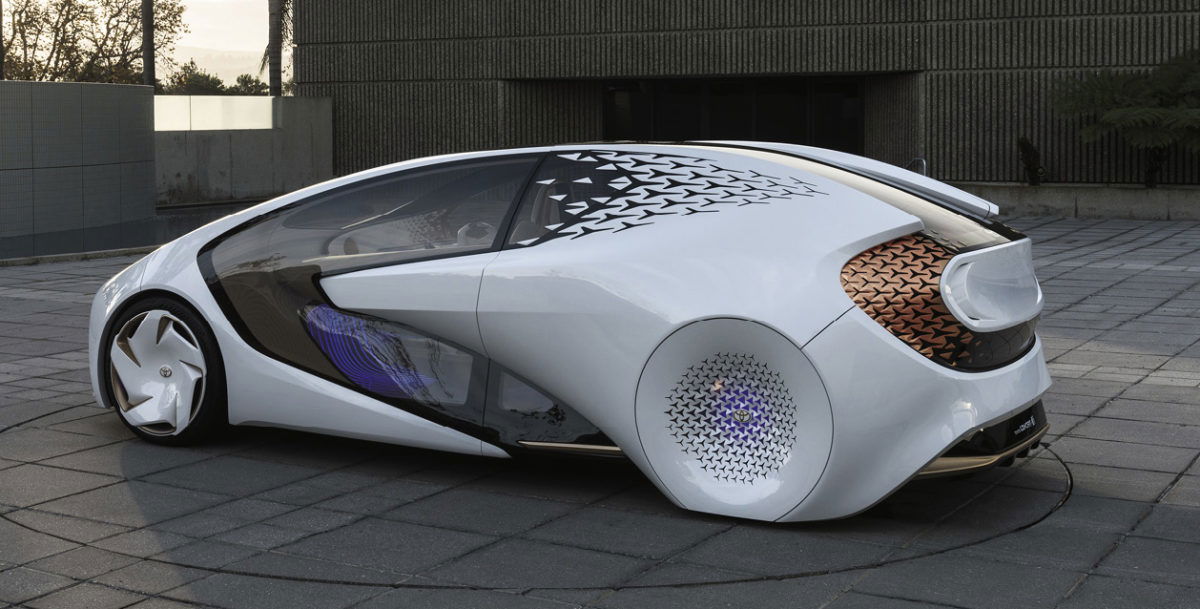
Toyota Concept / Photo Credit: PV Magazine International.
Solid-state batteries (SSBs) have the potential to transform multiple industries, offering superior performance, safety, and longevity compared to traditional lithium-ion technology.
Electric Vehicles (EVs) – Impact on Range and Performance
SSBs could revolutionize EV battery technology, delivering longer range, faster charging, and lighter battery packs. With higher energy density, EVs can travel farther on a single charge without increasing battery size or weight.
Faster charging speeds reduce downtime, making EVs more practical for daily use. Additionally, improved durability means fewer battery replacements, lowering long-term costs for consumers.
Consumer Electronics – Longer Battery Life for Smartphones and Laptops
SSBs can extend battery life in smartphones, laptops, and wearable devices, reducing the need for frequent charging. Their enhanced durability means less battery degradation over time, keeping devices running efficiently for years.
The absence of flammable liquid electrolytes also makes electronics safer, reducing the risk of overheating or battery-related failures.
Renewable Energy Storage – Supporting Grid Storage and Sustainability
As renewable energy sources like solar and wind grow, reliable energy storage is critical. SSBs can store more energy with greater efficiency, making them ideal for grid-scale storage.
Their long lifespan ensures a more sustainable energy infrastructure, reducing reliance on fossil fuel backup systems.
Medical and Aerospace Uses – Enhanced Reliability for Specialized Applications
SSBs’ compact size, reliability, and safety make them ideal for medical implants, space exploration, and aviation. In medical devices like pacemakers, longer-lasting batteries mean fewer replacements.
In aerospace, SSBs provide lightweight, high-energy solutions for satellites and electric aircraft, enhancing performance in extreme environments.
From EVs to electronics and beyond, solid-state batteries are set to reshape energy storage, driving efficiency, sustainability, and innovation across multiple sectors.
Major Companies Leading the Solid-State Battery Race
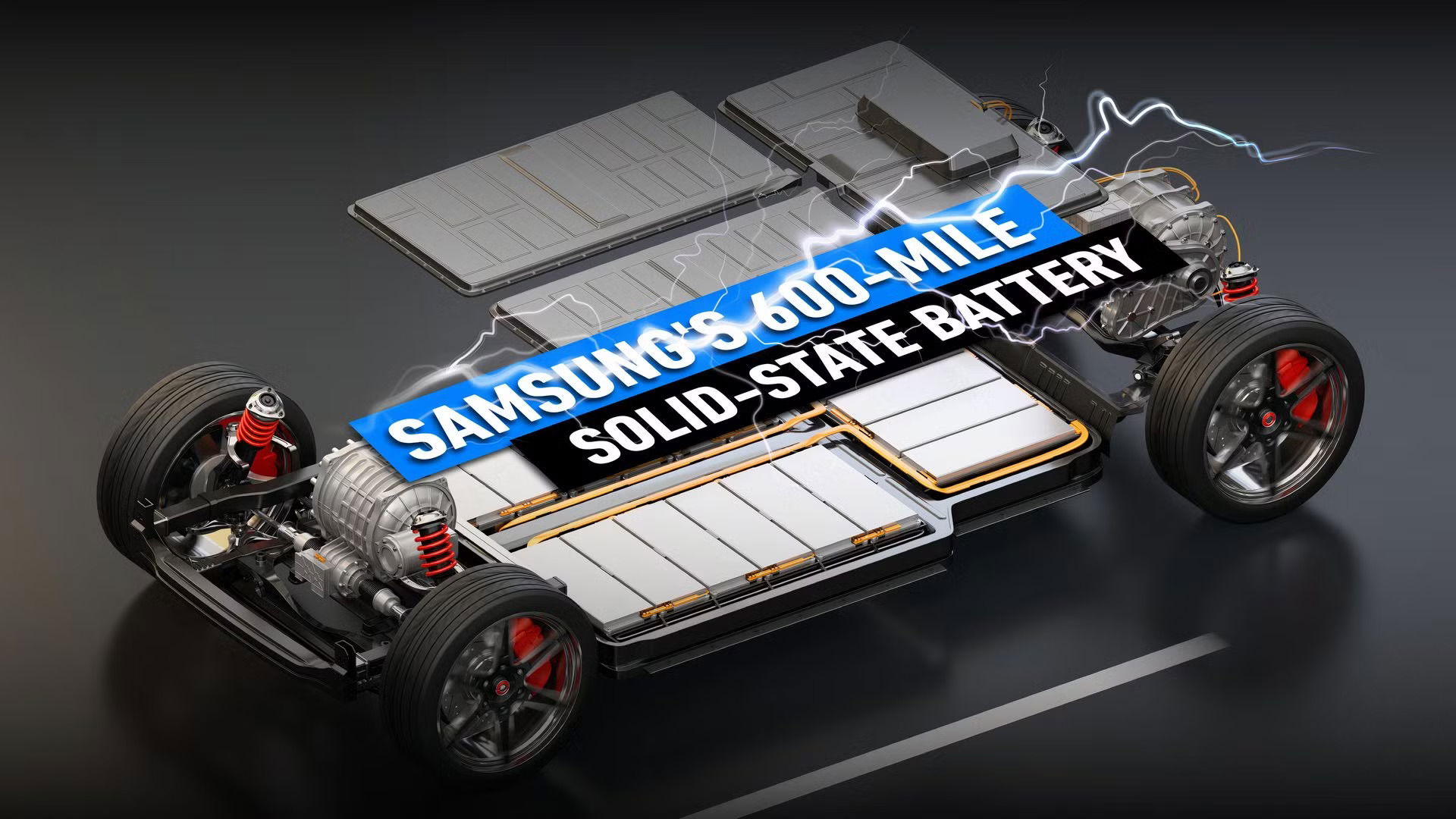
Photo Credit: Samsung.
The race to commercialize solid-state batteries (SSBs) is heating up, with major players from the automotive, tech, and energy industries investing billions into research and development.
These companies are working to overcome manufacturing challenges and bring SSBs to market.
Toyota – The Early Pioneer with a Strategic Edge
Toyota has been at the forefront of SSB development for over a decade, filing more patents in this space than any other company.
The automaker aims to launch a prototype EV with SSB technology by 2025, promising over 700 miles of range and ultra-fast charging times.
However, Toyota's initial rollout will likely be limited to hybrid vehicles before full EV integration, as it refines the technology for mass production.
QuantumScape – Silicon Valley’s Bold Bet
Backed by Volkswagen, QuantumScape is one of the most promising pure-play solid-state battery startups. Its lithium-metal anode design could significantly increase energy density and reduce charging times to under 15 minutes.
While QuantumScape has successfully demonstrated single-layer cells, scaling to multi-layer commercial cells remains a challenge. The company targets a 2025-2026 launch for early-stage production, with Volkswagen expected to be its first customer.
Solid Power – The Modular Approach
Unlike QuantumScape, Solid Power is developing sulfide-based SSBs that can be manufactured using existing lithium-ion production lines, reducing costs and accelerating scalability.
Ford and BMW are major investors, with the company aiming to deliver prototype EV batteries for testing by 2025. If successful, its compatibility with current gigafactories could give it a significant manufacturing advantage.
Samsung SDI – Tech Giant’s Entry into the Market
Samsung SDI, a leader in battery technology, is leveraging its expertise in consumer electronics to develop commercial-scale SSBs.
The company has already produced prototype cells with a 900-mile range and over 1,000 charge cycles. Samsung aims to deploy SSBs in smartphones and laptops first, followed by automotive applications by 2027-2028.
CATL and Other Emerging Players
As the largest lithium-ion battery producer, CATL is investing heavily in solid-state research but remains cautious about commercialization timelines.
Meanwhile, companies like Hyundai, LG Energy Solution, and Panasonic are also making strategic moves. Startups like ProLogium and Ilika are pushing novel solid-state architectures, aiming to disrupt the market with breakthroughs in cost and performance.
With fierce competition and billions in R&D, the next decade will determine which players successfully bring SSBs to mass production, revolutionizing EVs and energy storage.
The Future of Solid-State Batteries
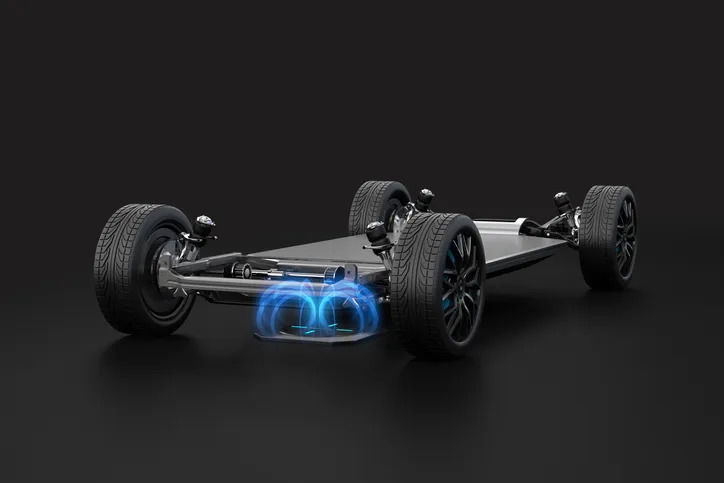
Photo Credit: Getty.
Solid-state batteries (SSBs) are poised to revolutionize energy storage, offering significant advancements over traditional lithium-ion batteries.
Projected Advancements in Technology
SSBs promise higher energy densities, potentially doubling the capacity of current lithium-ion batteries. This increase could enable electric vehicles (EVs) to achieve ranges exceeding 700 miles on a single charge.
Additionally, SSBs are expected to offer faster charging times, with the potential to recharge EVs in under 15 minutes. Their solid electrolytes enhance safety by reducing the risk of thermal runaway and fires.
Companies like QuantumScape are pioneering lithium-metal anode designs to further boost energy density and reduce charging durations.
Estimated Market Adoption Timeline
While the potential of SSBs is immense, their widespread commercial adoption faces challenges. Manufacturing complexities and high production costs are significant barriers.
Industry experts project that SSBs will begin limited commercial use by 2025, primarily in high-end applications. Mass-market adoption is anticipated around 2030, contingent upon technological advancements and cost reductions.
Bill Kephart of P3 Group estimates a 3% to 5% market penetration for SSBs by 2030, emphasizing the need for improvements in performance, manufacturability, supply chain, and cost.
Potential Impact on Global Energy and Sustainability
The integration of SSBs into the energy sector could have profound implications for global sustainability. For EVs, the enhanced energy density and safety of SSBs could accelerate consumer adoption, reducing reliance on fossil fuels and decreasing greenhouse gas emissions.
In renewable energy, SSBs offer efficient and long-lasting storage solutions, facilitating the integration of intermittent sources like solar and wind into the grid. This capability supports a more resilient and sustainable energy infrastructure.
Furthermore, the solid electrolytes in SSBs eliminate the need for certain hazardous materials, contributing to more environmentally friendly battery production and disposal processes. As SSB technology matures, it is poised to play a pivotal role in the global transition toward cleaner energy systems.
Summarily, while challenges remain, the advancements in solid-state battery technology hold the promise of transforming energy storage, transportation, and sustainability efforts worldwide.
The Takeaway
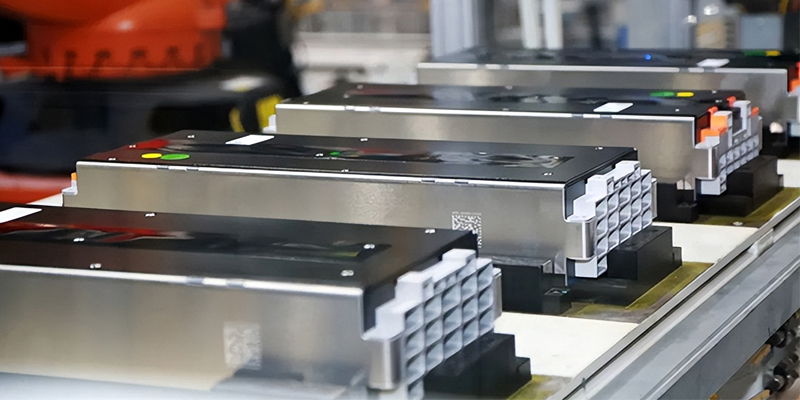
Photo Credit: ELB Energy Group.
Solid-state batteries (SSBs) are poised to revolutionize energy storage and transportation by offering higher energy densities, faster charging times, and enhanced safety compared to traditional lithium-ion batteries. These advancements could significantly extend electric vehicle (EV) ranges and improve performance.
However, experts caution that widespread adoption faces challenges. Bill Kephart of P3 Group estimates a modest 3% to 5% market penetration for SSBs by 2030, citing necessary improvements in performance, manufacturability, supply chain, and cost. Consequently, while SSBs hold transformative potential, they are unlikely to become mainstream before the next decade.